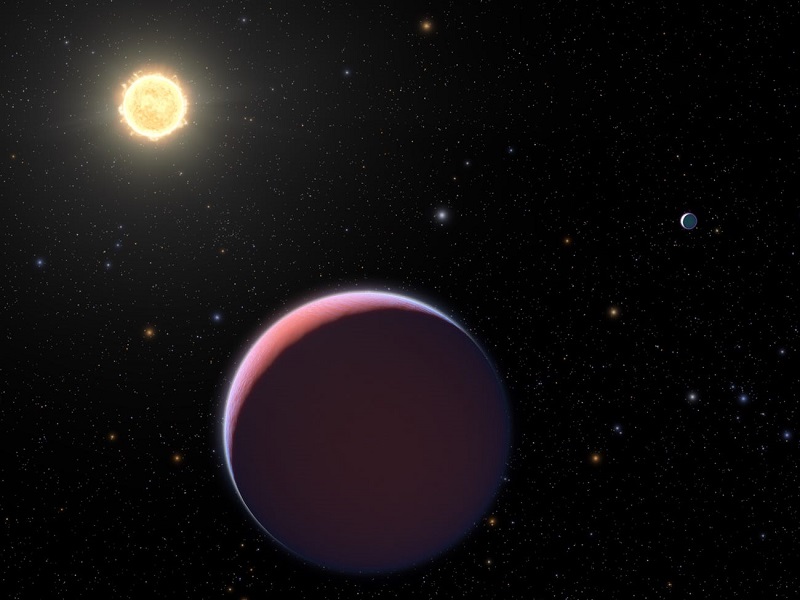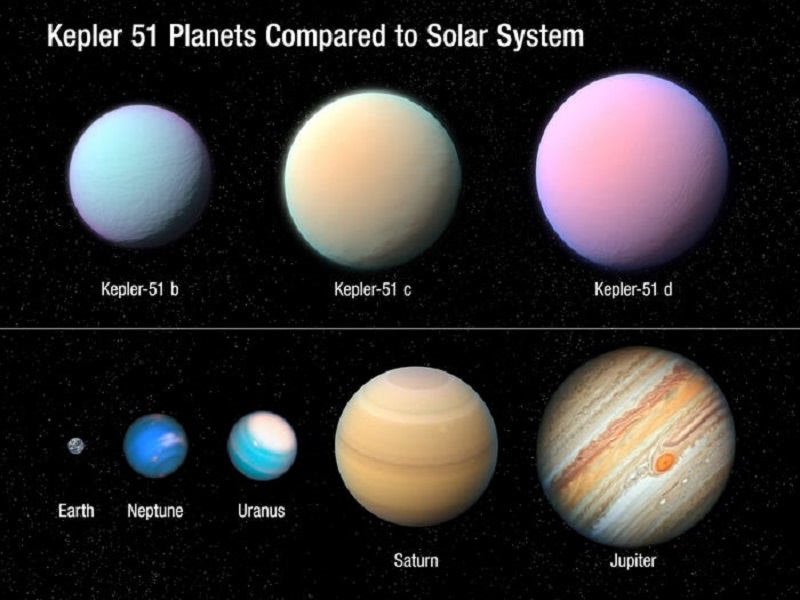New data from NASA’s Hubble Space Telescope has confirmed that “cotton candy” planets are for real. Although they are not really made of cotton candy, there’s something very special about them.
Cotton candy planets are unique in our Solar System

First of all, their state of transition is the reason why they are unique in our Solar System. The Kepler-51 star they orbit is very young (500 million years old), compared to our 4.6-billion-year-old sun.
“This is an extreme example of what’s so cool about exoplanets in general,” Berta-Thompson, an assistant professor of planetary sciences and co-author of the study, said in the release.
“They give us an opportunity to study worlds that are very different than ours, but they also place the planets in our own solar system into a larger context.”
In other words, cotton candy planets are nothing but a very rare and unique class of young planets. The astronomers are also calling the new planets “super-puffs.”
Why? Because they have almost the same size as Jupiter, but with 100 times less mass. In other words, these planets might look as huge as Jupiter but are a hundred times lighter in terms of mass.
Although the planets were first identified in 2014, the latest observations clarify their mass and size, confirming that they are indeed super-puffs. All three planets have a density of less than 0.1 grams per cubic centimeter of volume, almost identical to cotton candy.
The new super-puff grouping and its characteristics

As a matter of fact, NASA confirmed that three exoplanets (the term for worlds that orbit distant stars) fall into the new super-puff grouping. The planets circle a sun-like star 2,600 light-years away.
They’re very bizarre,” Jessica Libby-Roberts, the one who led the research, said in a press release. “When you picture a Jupiter-sized ball of cotton candy—that’s really low density.”
The Kepler space telescope found these three super-puffs in 2012, and the researchers behind the study discovered just how mysteriously lightweight these planets were in 2014. But how did they figure out?
The researchers used Hubble, NASA’s most effective space telescope, and its infrared lens to scan a starlight crossing two of the super-puffs’ atmospheres. So the team determined which chemicals make up the cotton candy planets’ atmospheres.
But the researchers couldn’t notice any chemical signatures because they were blocked by thick clouds. It seems that the planets are clouded in a thick methane just like Saturn’s moon Titan. And the clouds might be made of salt crystals or methane instead of water.
“If you hit methane with ultraviolet light, it will form a haze,” Libby-Roberts said. “It’s Titan in a nutshell.”
Even if we don’t know for sure what super-puffs are truly made of, one thing is for sure. Researchers will find out more about these planets when NASA launches James Webb Space Telescope, a tool that can peer through the smog.












































